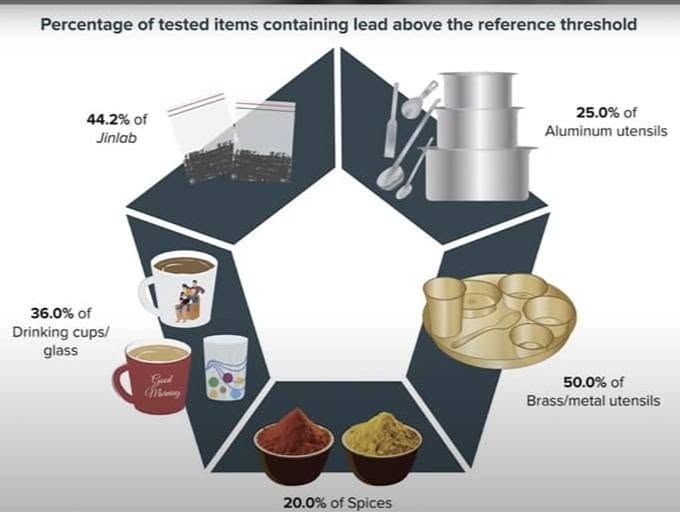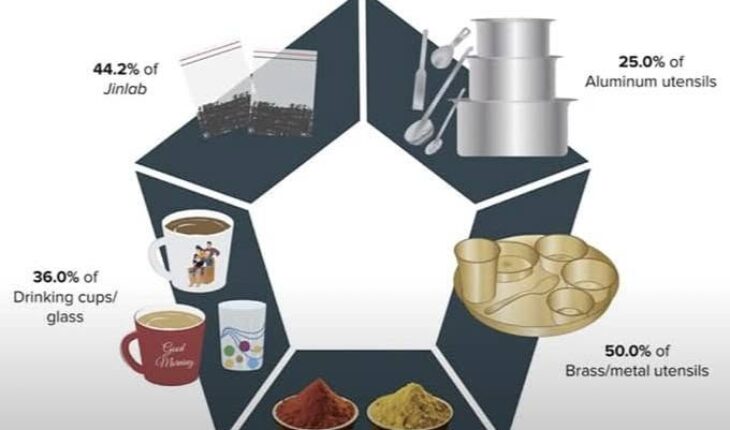
TIL BDR GHALLEY
Thimphu
A comprehensive national survey conducted by Ministry of Health and UNICEF has uncovered a critical public health crisis.
A staggering 76 percent of Bhutanese children aged one to six have blood lead levels (BLLs) exceeding 3.5 micrograms per deciliter, a threshold linked to serious health risks.
The findings, released on October 25, 2024, stem from first national blood lead survey, which assessed children from all 20 dzongkhags.
The results highlight a pressing health emergency affecting children across socioeconomic backgrounds and environments.
“Children are especially susceptible to lead exposure, as they absorb it more readily than adults,” said Health Secretary Pemba Wangchuk. “Even minimal levels of lead can significantly impair brain and body development, leading to lower IQs, academic difficulties, and health complications. Importantly, no level of lead in the body is considered safe.”
According to the data, 51 percent of children tested had BLLs above the World Health Organization’s (WHO) reference level of 5 micrograms per deciliter—a point at which adverse effects are well documented.
The situation is even more severe in monastic institutions, where 86 percent of children recorded BLLs exceeding 3.5 micrograms per deciliter.
“In the USA, only 2.5 percent of children aged one to six show elevated blood lead levels—about one in fifty. But in Bhutan, it’s three in four. That is very concerning,” said Kinley Dorjee, lead researcher of the national survey from the Ministry of Health.
Lead, a heavy metal, affects nearly every organ system in the body. Children are particularly vulnerable due to their developing nervous systems.
“Lead exposure impairs brain development, leading to lifelong cognitive, neurological, and physical challenges,” emphasized Andrea James, UNICEF Representative in Bhutan.
Dr. Phillip Erbele, pediatrician and assistant professor at the Faculty of Nursing and Public Health, added, “The younger the child, the more likely they are to ingest lead, especially from contaminated items. Once inside the body, lead crosses into the brain and deposits permanently, causing irreversible damage.”
The study also revealed that 59 percent of women tested had BLLs of 3.5 micrograms per deciliter or higher, posing risks to maternal health and fetal development.
Testing of over 2,400 household and religious items identified widespread sources of contamination, including utensils, religious artifacts, cosmetics, toys, spices, soil, furniture, and household fixtures.
Among the most alarming findings were Jinlaba “traditional religious substance” or blessed pills, spiritual offerings distributed by lamas. Of 767 samples tested, 44.2 percent exceeded the safety threshold of 2.5 parts per million (ppm) of lead.
One sample recorded 57,233 ppm, while the median concentration was 85 ppm 34 times higher than the permissible limit for spices.
The report also established a direct correlation between Jinlab consumption and elevated BLLs in children. Among those who had ever consumed Jinlab, 78 percent had elevated BLLs, compared to 72.1 percent of those who had not.
Religious items such as pendants, butter lamps, and incense burners were also significant sources. Over 75 percent of 214 items tested contained detectable lead, with one pendant showing an alarming 788,537 ppm.
“Identifying the source of lead is difficult because it is present in many commonly used items,” said Health Minister Lyonpo Tandin Wangchuk. “Printed images on cups contain lead, and religious items are significant contributors. While it is difficult to completely stop exposure, the national media has played a pivotal role in raising awareness.”
Kitchenware emerged as another major source. Of 665 kitchen items tested, 21.5 percent exceeded the 100-ppm lead threshold, with brass or metal plates, bowls, and cups showing the highest contamination some reaching up to 45,744 ppm.
Spices, a dietary staple in Bhutanese households, were also found to be contaminated. One-third of turmeric samples and one-fourth of chili powder samples exceeded lead safety limits.
Nearly half of 246 tested items contained detectable lead levels, while 16 percent of indoor furniture exceeded the reference threshold of 1 mg/cm². Cupboard handles, latch locks, and doorknobs also recorded lead concentrations far above expected levels for brass alloys.
The report also shows that 9.1 percent of toys and 9.8 percent of school supplies surpassed the 100-ppm safety limit. Some commercially manufactured toys for children over one year old contained up to 561,122 ppm.
Paint and soil samples posed comparatively lower but notable risks. Of 127 paint samples, 0.8 percent exceeded WHO’s recommended threshold.
Meanwhile, 3.3 percent of 60 soil samples tested above 200 ppm, particularly in play areas and drip lines spaces where children frequently come into contact with soil.
Cosmetic products were also found to contain lead. Of 14 samples tested, 14.3 percent had levels above detection limits, with one recording 25 ppm. These products, applied to lips and skin, pose direct ingestion risks for both children and adults.
Dr. Erbele also underscored the economic implications of lead poisoning. “A World Bank study found that IQ loss alone from lead poisoning can reduce a country’s GDP by over 3 percent. When including increased cardiovascular risks and early deaths, the total economic loss rises to more than 9 percent. For Bhutan, that’s about Nu 21 billion annually.”
In response to the alarming findings, the Ministry of Health is collaborating with the Khesar Gyalpo University of Medical Sciences of Bhutan (KGUMSB), the Faculty of Nursing and Public Health (FNPH), and international partners including UNICEF to develop a national action plan.
These include stricter regulations, routine BLL screenings, identification of contamination sources, and integration of mitigation measures into Bhutan’s national development frameworks.
“The Ministry of Health, in collaboration with various stakeholders, is committed to implementing strategies to reduce lead exposure,” said Secretary Wangchuk. “Collective action is essential to safeguard the health of our children and communities.”
UNICEF Bhutan has also issued an urgent call to action. “Lead poisoning is a silent and insidious threat that causes irreversible damage, especially to children under five,” said Andrea James. “We must act now to build a sustainable and resilient future that places children’s environmental health at its core.”
According to the World Health Organization, there is no known safe level of lead exposure. Even BLLs as low as 3.5 micrograms per deciliter have been linked to reduced intelligence, behavioral issues, anemia, kidney damage, and developmental delays.
The national survey presents Bhutan with a serious but solvable public health challenge. The widespread contamination of everyday items and the alarmingly high blood lead levels in children demand urgent, coordinated, and sustained action to protect future generations.




